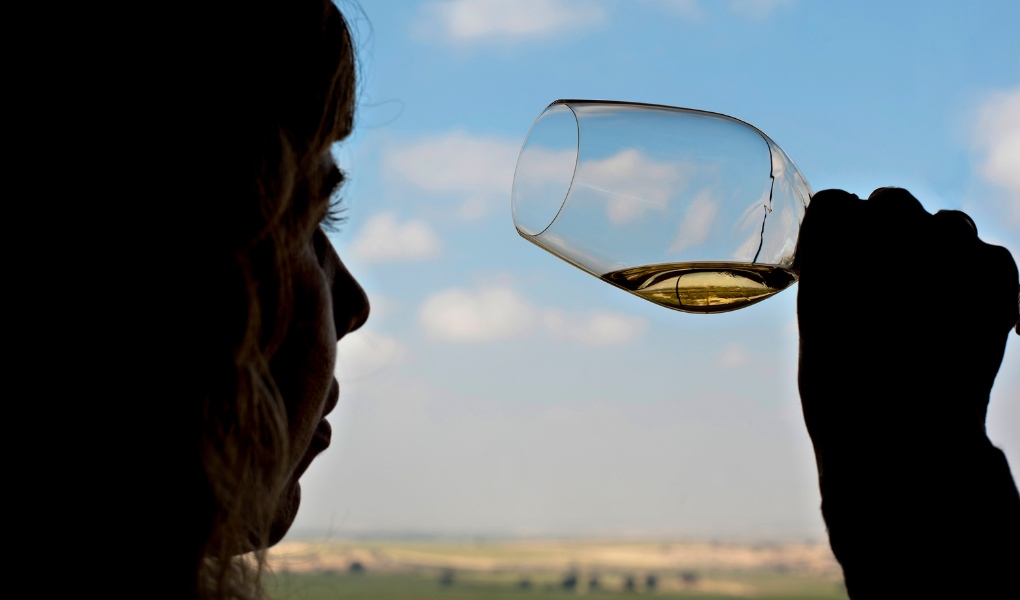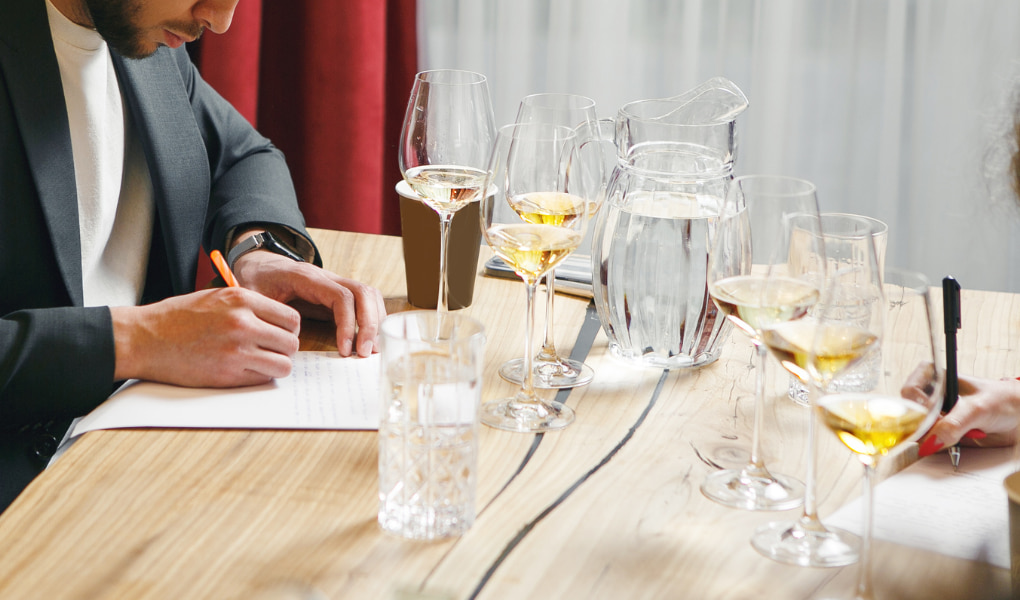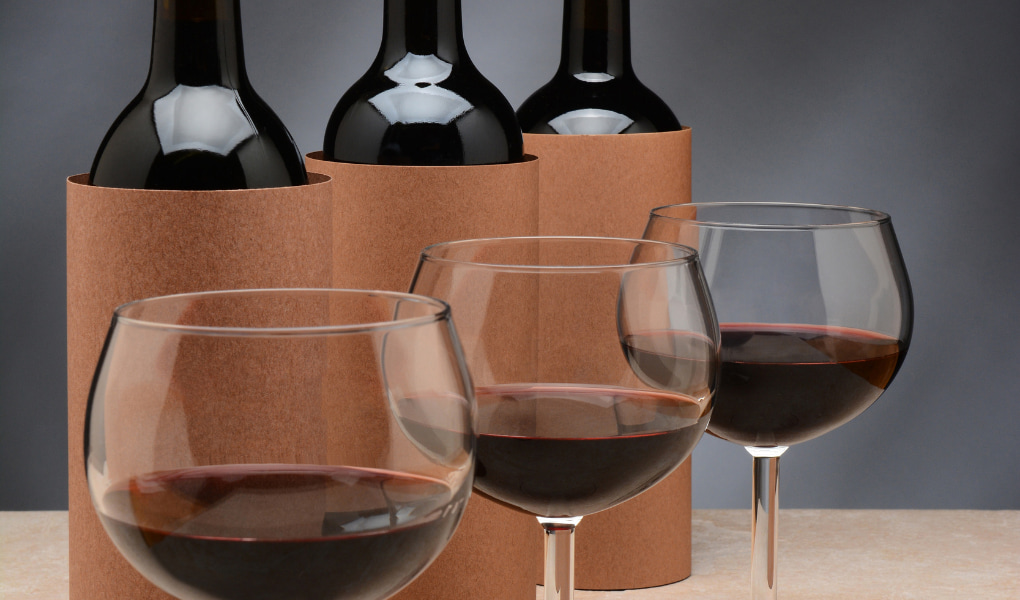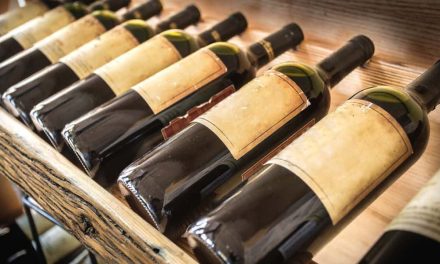An ambitious way of wine tasting
Blind Tasting?
For those who have ever taken part in a wine exam that requires blind tasting, these two little words evoke a mixture of emotions: fear, excitement, frustration and – for those who have successfully passed – elation. Most wine professionals who have experience with blind tastings can tell a story about a particularly difficult blind tasting scenario where they correctly identified an iconic wine down to the producer or caught a completely «unrivalled» wine. Of course, we also remember the ones where we got it horribly wrong, but talking about them is much less fun.
What is the blind tasting all about?
A blind tasting makes it possible to judge a wine objectively without any prior prejudices and to assess it independently of individual preferences. In this way, the influence of the popularity of the region of origin, grape variety or winemaker is avoided, and the evaluation is based solely on the impressions conveyed by the wine. A certain modesty is required, as all tasters are ultimately in the same starting position. The following are examples of some situations in which blind tasting plays a role:

The world of wine opens up a fascinating realm of intense impressions and flavour experiences. In blind tasting, the wine is subjected to a successive journey of the senses – it is experienced, analysed, tasted and finally evaluated.
During this process, the fine wine remains anonymous in the glass. At the beginning, the tasters do not know which wine it is. This approach ensures that the tasters are not influenced by labels or the reputation of a renowned winery in their assessment. In this way, the judgement after the blind tasting is unbiased and neutral.
We would now like to explain the detailed procedure of a blind tasting step by step.
Preparation
Avinate the glass by pouring about 4 cl of wine and gently tilt it at an angle until the glass walls are completely wetted. Prepare the glass by actively swirling and then pouring out the wine. Now the actual blind tasting can begin. Pour about 6 to 8 cl generously, but not too generously, into your wine glass – this will give you enough room to swirl the wine with pleasure.
1. Observe
The first step is to swirl the wine in the glass to observe the stained glass windows – the slow flow patterns at the edge of the glass. These shapes, more pointed with a higher alcohol and extract content, are known as viscosity. The slow, clear stained glass windows indicate a richer wine. However, the tears or viscous drops do not affect the quality of the wine.
The second part of the visual assessment concerns the colour of the wine. A lighter red wine with brownish nuances on the rim indicates an older wine, as the colour pigments settle to the bottom over time. Darker red wines often come from hotter growing regions and are stronger in colour. The reverse is true for white wines: darker white wines are usually older than lighter-coloured wines. In a blind tasting, the colour of the wine provides information about the age, the grape variety and the growing region. In addition, the wine should be clear and shiny in the glass.

2. Smell
Before the first sip and in the second step of a blind tasting, the wine is smelled intensively. By swirling the wine glass strongly and then inhaling briefly, numerous fruit flavours are perceived, which considerably enhances the enjoyment. Please always swirl the wine glass by the stem and avoid holding the goblet or the body of the glass in your hand. Body heat can significantly affect the flavour.
Basically, flavours can be divided into several main categories: spicy, caramelised, fruity, herbal, floral, smoky. These categories provide pure information about the aromatic nuances.
Wine can take on up to 500 different aromatic flavours, which makes the variety of olfactory experiences enormous. If you cannot immediately identify a fragrance, take your time when smelling it. By repeatedly swirling and smelling, you can elicit the wine’s unique notes.
In addition to the so-called primary aromas, most wines also develop secondary aromas that are only perceived after a longer period of smelling or in the aftertaste. These flavours should also be identified as precisely as possible.
3. Taste
Now you can taste the wine – the flavour assessment is the most demanding task during the blind tasting. The wine is assessed in the mouth in three ways: by flavour, smell and consistency. When tasting, the wine remains in the mouth for a while and slurping (sucking in air) allows more flavours to develop. In short: the wine tastes more intense and the individual flavours stand out more clearly. In particular, you can distinguish between the sweet, sour, salty and bitter flavours.
After the basic flavours, the aromas are identified in the same way as when smelling. Primary and secondary flavours should be assigned to up to 500 fragrance nuances.
Finally, the wine is tasted: How does it feel? Viscous, meaty, fatty or rather thin and light? A crisp wine is refreshing, a soft one is harmonious, while a hard one is somewhat irritating. Textures such as velvety, creamy or oily can also be determined here.
4. Finish
After you have tasted the wine extensively and intensively, you have the choice in this step of the blind tasting – either swallow the sip or spit it out.
In the final part of the tasting, the focus is on the impression and persistence of the wine flavours, especially the famous finish or finale. The taster assesses how the flavour and consistency affect the palate and whether the overall impression is harmonious. The duration of the remaining flavours plays a role here: a short finish is when all the flavours disappear immediately; a medium finish is when the wine slowly fades away; and a long finish is when new to intense nuances emerge after swallowing.
At the same time, it is important to sense the harmony of the wine. An inharmonious wine can stand out due to clear structural problems or irritations, for example if a flavour or alcoholic note is too dominant. In the best case, the structure of the wine is naturally balanced.










